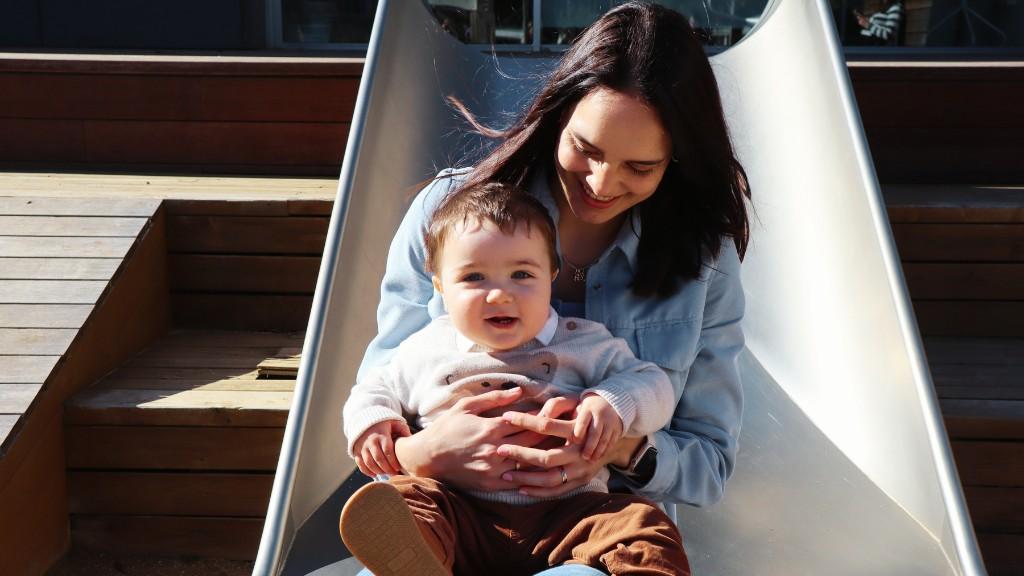‘Thanks to the SJD Barcelona Children's Hospital's fertility preservation programme, I was able to become a mother after having cancer’

Anna was diagnosed with childhood cancer—an osteosarcoma—and consented to the extraction of ovarian tissue for later reimplantation should she ever wish to conceive in the future.
Anna was a little under 18 years old when she noticed her first symptoms of cancer. ‘I noticed a pain on the top of my left foot, so we went to the doctor. It took months, even a year, I'd say, for us to figure out what was happening to me because, as the doctors later told me, my case was unique. Normally, these type of cancers appear in the knees and the hips, but mine appeared in my foot, which confused them’, she recalls, 17 years later.
A biopsy revealed, at last, that Anna had an osteosarcoma, a type of childhood cancer that affects the bones. Her medical team at the private Barcelona hospital then decided to operate straight away to remove the tumour.
Treatment would continue afterwards with various cycles of chemotherapy, which could have serious repercussions for her future fertility. That is why, before starting treatment, staff at the centre decided to contact Justo Callejo—who, at the time, was the Head of Gynecology at the SJD Barcelona Children's Hospital—to evaluate the viability of cryopreserving ovarian tissue.
'We are talking about 2008. The egg cryopreservation programme had not started yet. The egg vitrification technique changed the game, and nowadays, teenage girls can freeze their eggs or ovarian tissue, depending on timeframes and the individual characteristics of the patient’, explains Cristina Salvador, joint head of the fertility preservation programme alongside Santiago González.
‘When they suggested extracting some ovary tissue in case one day I wanted to be a mother, I was very young’, Anna mentions. ‘I agreed just in case, because back then I didn't know whether I wanted to have children or not. I hadn't even thought about it, honestly’.
A few days later, staff from the fertility preservation programme at the SJD Barcelona Children's Hospital extracted a fragment of ovarian tissue from Anna through a laparoscopy. The sample was sent to the Banc de Sang i Teixits (tissue and blood bank), where all the ovarian tissue from patients included in the programme are stored. They stayed there, frozen, for 14 years.
After her treatment for the osteosarcoma, which went on for nine months and involved two surgical operations and several cycles of chemotherapy, Anna was able to get on with her life. She continued her studies, starting working, and then at 30 years old, she got married. ‘It was then that I knew I wanted to be a mother. My husband and I started trying but there was no way. We had been trying for two years, without any success, when I decided to get in touch with the SJD Barcelona Children's Hospital to see if there was anything we could do’, she recounts.
‘We had been trying for four years all in, when one day, just two months after the transplant, we finally saw the result we were hoping for’
After various attempts at artificial insemination and in vitro fertilisation, the staff treating Anna suggested reimplanting the ovarian tissue they extracted 14 years prior. The transplant took place on 23 March 2022 and, just three months later, on 20 June 2022, Anna took the pregnancy test that confirmed she was three weeks pregnant.
‘I was stunned. I had no idea it could happen so quickly. We had been trying for four years all in, when one day, just two months after the transplant, we finally saw the result we were hoping for. We were over the moon’, she reminisces.
On 26 February, it will be one year since Biel came into the world. ‘He is a cheerful, smiley baby. We are completely smitten with him. Thanks to the fertility preservation programme at the SJD Barcelona Children's Hospital, I was able to become a mother. I am so thankful for the staff who decided to study the cryopreservation of ovarian tissue and whether it could help girls and women going through the same situation I did. Back then I had no idea about the magnitude or significance of what they were suggesting, but now, with time, I have realised how much I wanted to be a mother and how it would have been much more difficult to achieve my dream another way’, she admits.
For now, Anna is focusing on raising Biel, but she has not ruled out having a second child. ‘Not anytime soon, no, but later down the line, maybe. We have that opportunity. If we managed to do it once, why not a second time?’



